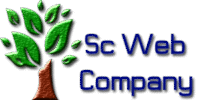Cyber Security
All Service
- Development
- UI/UX Designing
- Digital Marketing
- Data Analysis
- Cyber Security
- Digital Experience
- Manage It Service
- Graphic Designer
- Motion Graphics
- Photography Designer
- Software
- Videographer
- Server Administrator
- Photography Designer
- Database Backup
- Live Broadcast
- Network Administrator
- Social Media
- Website Repair and Build

🛡️ Cybersecurity in the Digital Age: Sector-Specific Insights & Essential Tools
Cybersecurity is no longer a one-size-fits-all discipline. Each industry faces unique threats, compliance requirements, and operational challenges. This guide explores how cybersecurity applies across key sectors—and the tools every organization should know.
1. Wireshark
A powerful network protocol analyzer used to monitor traffic and detect anomalies. It’s widely applicable across all industries.
2. CrowdStrike Falcon
An AI-powered endpoint protection and threat intelligence platform. Commonly used in corporate environments, finance, and healthcare sectors.
3. Bitdefender GravityZone
Provides antivirus and endpoint security solutions. Ideal for small to medium-sized businesses, educational institutions, and retail operations.
4. Darktrace
Uses artificial intelligence for autonomous threat detection. Especially valuable for large enterprises and industrial sectors.
5. Splunk
A leading SIEM (Security Information and Event Management) tool for log analysis and threat monitoring. Frequently used in finance, healthcare, and government.
6. Zscaler
Offers cloud security and zero trust access solutions. Popular among corporate networks and e-commerce platforms.
7. pfSense
An open-source firewall solution. Widely adopted by educational institutions and small businesses for network protection.
8. Metasploit
A penetration testing framework used to identify and exploit vulnerabilities. Commonly used by cybersecurity teams and academic researchers.
9. Okta
Provides identity and access management (IAM) services. Essential across all industries for secure user authentication and access control.
10. Qualys
A vulnerability scanning and compliance assessment tool. Frequently used in finance, healthcare, and manufacturing sectors.
🛡️ Cybersecurity in the Digital Age: Sector-Specific Insights & Essential Tools
Cybersecurity is no longer a one-size-fits-all discipline. Each industry faces unique threats, compliance requirements, and operational challenges. This guide explores how cybersecurity applies across key sectors—and the tools every organization should know.
🏥 Healthcare
Key Risks
- Patient data breaches (e.g., EMR systems)
- Ransomware targeting hospital infrastructure
- IoT vulnerabilities in medical devices
Compliance Standards
- HIPAA (US)
- GDPR (EU)
- ISO/IEC 27799
Recommended Practices
- Encrypt patient records
- Use secure telemedicine platforms
- Implement biometric access for staff
💳 Finance & Banking
Key Risks
- Fraudulent transactions and identity theft
- Insider threats and data leaks
- Attacks on payment gateways and APIs
Compliance Standards
- PCI-DSS
- SOX
- Basel III
Recommended Practices
- Real-time fraud detection systems
- Multi-factor authentication for clients
- Secure mobile banking apps
🛒 E-Commerce & Retail
Key Risks
- Credit card skimming
- Fake websites and phishing scams
- Supply chain vulnerabilities
Compliance Standards
- PCI-DSS
- GDPR
- CCPA
Recommended Practices
- Secure checkout and payment encryption
- Bot protection for inventory systems
- Customer data anonymization
🏭 Manufacturing & Industrial IoT
Key Risks
- SCADA system attacks
- Intellectual property theft
- Disruption of automated production lines
Compliance Standards
- NIST Cybersecurity Framework
- IEC 62443
- ISO/IEC 27001
Recommended Practices
- Network segmentation for OT and IT
- Secure firmware updates
- Real-time monitoring of industrial protocols
🎓 Education & Academia
Key Risks
- Student data exposure
- Unauthorized access to research databases
- Phishing targeting faculty and students
Compliance Standards
- FERPA (US)
- GDPR (EU)
Recommended Practices
- Role-based access control
- Secure learning management systems
- Cyber hygiene training for students
🏢 Corporate & Enterprise
Key Risks
- Insider threats
- Business email compromise (BEC)
- Cloud misconfigurations
Compliance Standards
- ISO/IEC 27001
- SOC 2
- GDPR
Recommended Practices
- Endpoint detection and response (EDR)
- Cloud security posture management (CSPM)
- Employee awareness programs
Why Choose Our ScWebCompany?
Tech Services
Lorem Ipsum is simply dummy typesetting industry.
It Consulting
Lorem Ipsum is simply dummy typesetting industry.

Our Few Benefits
Nam vel lacus eu nisl bibendum accumsan vitae vitae nibh. Nam nec eros id magna hendrerit sagittis.
Namnec Eros Id Magna Hendrerit
- Nibh. Nam nec eros id magna hend
- Vitae nibh. Nam nec eros id magna he
- Nam nec eros id magna
Is My Technology Allowed On Tech?
In today’s fast-paced digital landscape, innovation thrives on collaboration and accessibility. But before launching your product or service on a tech platform, it’s essential to ask: Is my technology allowed here? At Tech, we welcome a wide range of technologies — from cutting-edge software tools and hardware solutions to AI-driven platforms and IoT devices. However, to ensure safety, compliance, and a positive user experience, all submissions must meet our core eligibility criteria: ✅ What We Accept • Legally compliant technologies that respect intellectual property rights and data protection laws. • Secure and stable solutions that do not compromise platform integrity or user privacy. • Innovative tools that contribute to the tech ecosystem — including apps, APIs, plugins, and frameworks. • Ethical AI and automation that align with responsible development standards. 🚫 What We Don’t Allow • Technologies that promote malware, spyware, or unauthorized surveillance. • Solutions that violate user rights, safety standards, or platform policies. • Products with unresolved security vulnerabilities or lacking proper documentation. How to Check If You’re Eligible If you're unsure whether your technology qualifies, we recommend reviewing our submission guidelines or contacting our support team. We’re here to help you navigate the process and ensure your innovation gets the visibility it deserves.
How to Soft Launch Your Business?
A soft launch is a strategic way to introduce your business to the market with minimal risk and maximum learning. Instead of going all-in from day one, you test your product or service with a limited audience, gather feedback, and refine your offering before a full-scale launch. 🚀 Why Choose a Soft Launch? - Minimize risk by identifying issues early - Gather real user feedback to improve your product - Build anticipation before your official launch - Test operations and workflows in a controlled environment 🧩 Key Steps to a Successful Soft Launch - Define Your Goals - Are you testing product-market fit, pricing, or user experience? - Set clear KPIs to measure success. - Choose a Target Audience - Select a small, relevant group of users or customers. - Consider loyal followers, beta testers, or local communities. - Prepare a Limited Offering - Launch with a simplified version of your product or service. - Focus on core features and value. - Collect Feedback Actively - Use surveys, interviews, and analytics to understand user behavior. - Be open to criticism — it’s your roadmap to improvement. - Refine and Iterate - Address bugs, usability issues, and customer concerns. - Polish your branding, messaging, and delivery. - Plan Your Full Launch - Use insights from the soft launch to shape your marketing strategy. - Build momentum with testimonials, case studies, and early success stories. 💡 Pro Tip: Treat your soft launch as a learning lab — not a final performance. The goal isn’t perfection, but progress.
How to Turn Visitors Into Contributors?
Every thriving digital platform starts with a simple goal: turn passive visitors into active participants. Whether you're building a creative hub, a tech community, or a collaborative workspace, encouraging contribution is key to long-term growth and engagement. 🌱 Start With a Welcoming Environment - Design for clarity: Make it easy to understand what your platform is about and how users can get involved. - Showcase community impact: Highlight how contributions shape the platform — through featured posts, user stories, or visible metrics. - Use inclusive language: Speak to beginners and experts alike. Avoid jargon that might alienate newcomers. 🎯 Lower the Barrier to Entry - Offer simple onboarding: Provide step-by-step guides, tooltips, or welcome messages that explain how to contribute. - Gamify the experience: Use badges, points, or progress indicators to reward first-time actions. - Create starter tasks: Suggest small, manageable ways to contribute — like commenting, sharing feedback, or uploading a single item. 🤝 Build Trust and Recognition - Acknowledge contributions publicly: Feature top contributors, celebrate milestones, and thank users for their input. - Enable peer support: Let experienced users mentor or guide newcomers. - Be transparent: Share how contributions are used, moderated, and valued. 🔄 Keep the Momentum Going - Send personalized nudges: Remind users of unfinished tasks or invite them to join trending discussions. - Update regularly: Keep content fresh and relevant to spark new interest. - Ask for feedback: Let users shape the platform’s evolution — it makes them feel invested.
How Can I Find My Solution?
Every challenge holds the seed of its own solution — you just need the right tools, mindset, and guidance to uncover it. Whether you're facing a technical issue, a creative block, or a strategic decision, finding your solution starts with asking the right questions. 🔍 Step Into Discovery Mode - Clarify the problem: Break it down into smaller parts. What exactly isn’t working? What outcome do you want? - Explore available resources: Use guides, tutorials, FAQs, and expert insights to expand your understanding. - Ask for help: Reach out to communities, mentors, or support teams. Collaboration often sparks clarity. 🧠 Think Creatively, Act Strategically - Challenge assumptions: Is there another way to approach this? Could a different tool or method work better? - Test and iterate: Try small experiments. Learn from what works — and what doesn’t. - Stay open to feedback: Sometimes the best solutions come from unexpected places. 🌟 Your Solution Is Within Reach Finding your solution isn’t just about fixing a problem — it’s about growth, learning, and unlocking new possibilities. Whether you're building something new or improving what exists, the journey itself is part of the answer.












